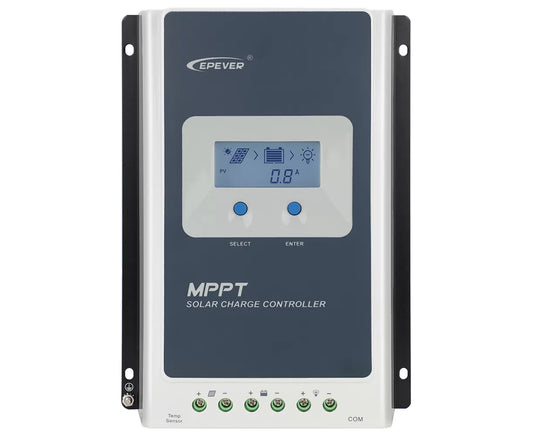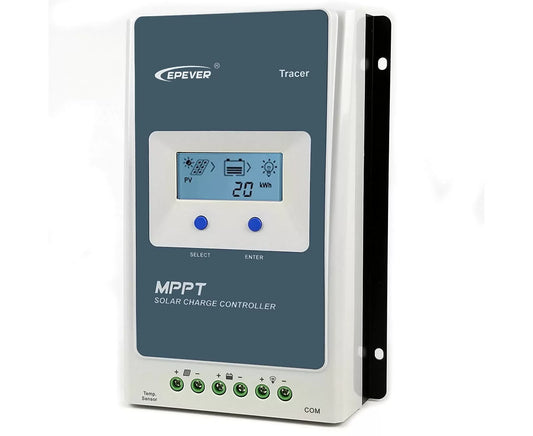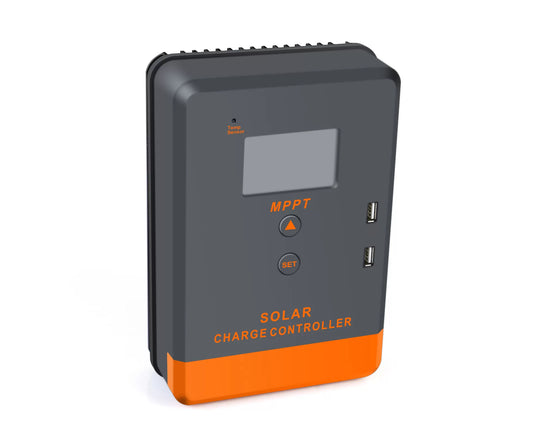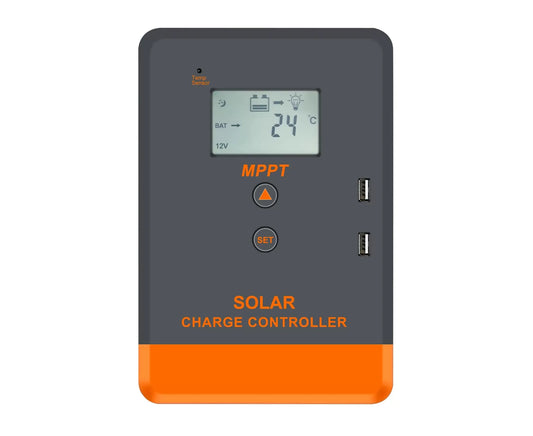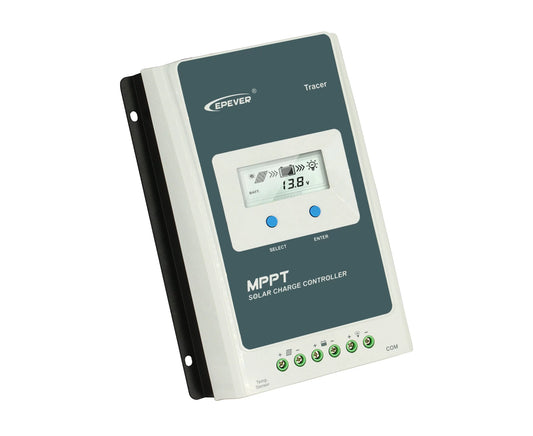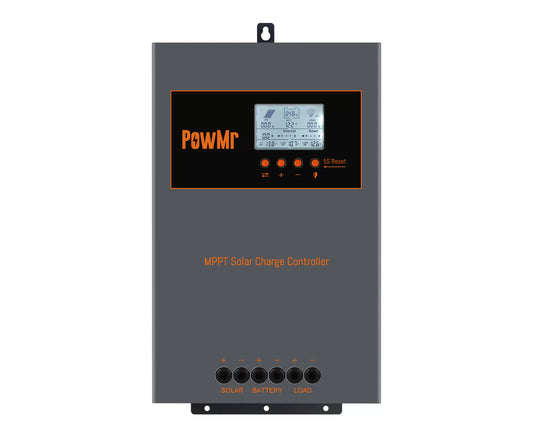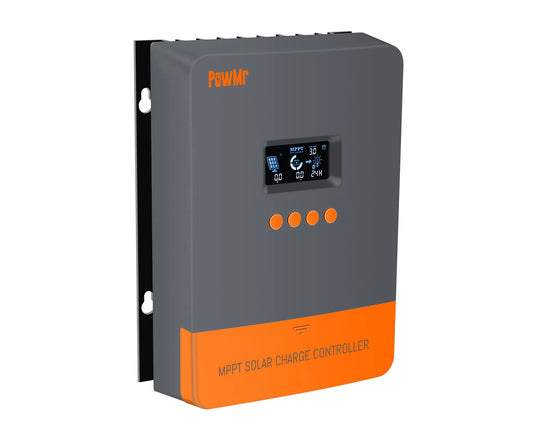Collection: MPPT Controllers
MPPT Controllers
In this collection, we have collected various kinds of MPPT solar charge controllers. There are some factors you need to take into consideration, just like battery voltage range, operating temperature range (heat dissipation), monitoring, build quality, MPPT tracking speed, real-world performance, price and so on. Here, you would always find that the high quality and affordable.
More about MPPT Controllers
What is MPPT Solar Charge Controller?
The MPPT (Maximum Power Point Tracking) charge controller optimizes the connection between the solar panel and the battery or the utility grid so that the solar panel can operate at its maximum power point. Mppt solar charge controller is far more advanced than the PWM controller. The main difference between the two is that the Mppt Solar Charge Controller allows up to 30% more power than the PWM solar charge controller and can be used for higher voltages. The efficiency of the solar charge controller mppt can be increased by up to 30%, depending on the battery voltage and working voltage (Vmp) of the solar panel.
How to Size Solar MPPT Charge Controller?
Add up the total watts of solar panels and divide by either 14.4 for 12-volt systems 28.8 for 24 volts or 58.8 for 48-volt battery banks. The calculated result is to provide you with the maximum output amperage of the solar mppt charge controller. Of course, in order not to waste power output, please set the size of the MPPT Solar Charge Controller to about two-thirds of the rated output of the controller.
- 20 amps are most efficient for a 30-amp controller
- 10 amp to 30 amp Mppt Solar Charge Controllers
- 45 amps are most efficient for a 60-amp controller
- 31 amp to 60 amp Mppt Solar Charge Controllers
- 65 amps are most efficient for an 80-amp controller
- 61 amp to 80 amp Mppt Solar Charge Controllers
- 80 amps are most efficient for a 100-amp controller
- 81 amp and higher Mppt Solar Charge Controllers
Main Features of Solar MPPT Charge Controller?
- MPPT can handle inclement weather
- MPPT controller is much more expensive than PWM controller
- MPPT charge controller has electronic protection and adaptive charging function
- The MPPT solar charge controller reduces the complexity of the system, while the output efficiency of the system is high
- The solar mppt charge controller can be applied to other renewable energy sources, such as small water turbines, wind turbines, etc.
Please note that before purchasing a mppt solar charge controller, you should consider the following:
- Please pay attention to your upper voltage limit
- Get a higher ampere mppt solar charge controller
- The number of solar panels you have and your energy needs
MPPT VS PWM, Differences:
1. Difference of Charging Method
PWM: 3 stage charging method (bulk, float, and absorb)
MPPT: Multi-Stage Charging(Bulk Charge, Balance Charge/Boost Charge, Absorb Charge, Float Charge)
2. Conversion Rates: PWM: 75%-80% Conversion Rate, MPPT: 99% Conversion Rate
3. Cost: PWM: $10 MPPT: from $60
How do MPPT charge controllers work?
Anyone familiar with the charging and discharging characteristics of the battery is familiar to the fact that the voltage of the battery varies with its charge content.As current flows from a high potential to low potential, the steeper the gradient or voltage difference, the greater is the flow of current.This potential gradient could be made steeper by two ways:
- By increasing the output voltage of the Solar Panel
- By decreasing the voltage of the battery (discharging the battery)
-
Tracer2210AN - EPever 20A MPPT Solar Charge Controller
Regular price $79.00 USDRegular priceUnit price / per -
Tracer10415AN - EPever 100A MPPT Solar Charge Controller
Regular price $448.00 USDRegular priceUnit price / per -
Tracer6415AN - EPever 60A MPPT Solar Charge Controller
Regular price $298.00 USDRegular priceUnit price / per -
Tracer1210AN - EPever 10A MPPT Solar Charge Controller
Regular price $57.00 USDRegular priceUnit price / per -
POW-Keeper1220 - Powmr MPPT 20A Solar Charger Controller
Regular price $83.00 USDRegular priceUnit price / per -
POW-Keeper1230 - Powmr MPPT 30A Intelligent Solar Charger Controller 0 Layer
Regular price $88.00 USDRegular priceUnit price / per -
POW-Keeper1240 - Powmr MPPT 40A Intelligent Solar Charger Controller 0 Layer
Regular price $93.00 USDRegular priceUnit price / per -
Tracer4210AN - EPever 40A MPPT Solar Charge Controller
Regular price $133.00 USDRegular priceUnit price / per -
K100 Pro - PowMr 100A MPPT Solar Charge Controller With 0 Layer Pricnciple | Best Solar
Regular price $184.00 USDRegular priceUnit price / per -
HHJ-60A - PowMr 60A MPPT Solar Charge Controller | Best Solar
Regular price $103.00 USDRegular priceUnit price / per -
POW-K48100A - PowMr 100A MPPT Solar Charge Controller 12/24/48V DC automatically identifying
Regular price $198.00 USDRegular priceUnit price / per -
POW-M60-PRO - PowMr 60Amps MPPT Solar Charge Controller12V 24V 36V 48V 0 Layer
Regular price $100.00 USDRegular priceUnit price / per
